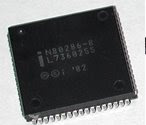OpenBSD is a Unix-like computer operating system descended from Berkeley Software Distribution (BSD), a Unix derivative developed at the University of California, Berkeley. It was forked from NetBSD by project leader Theo de Raadt in late 1995. The project is widely known for the developers' insistence on open source code and quality documentation, uncompromising position on software licensing, and focus on security and code correctness. The project is coordinated from de Raadt's home in Calgary, Alberta, Canada. Its logo and mascot is a pufferfish named Puffy.
OpenBSD includes a number of security features absent or optional in other operating systems and has a tradition of developers auditing the source code for software bugs and security problems. The project maintains strict policies on licensing and prefers the open source BSD licence and its variants—in the past this has led to a comprehensive licence audit and moves to remove or replace code under licences found less acceptable.
As with most other BSD-based operating systems, the OpenBSD kernel and userland programs, such as the shell and common tools like cat and ps, are developed together in a single source repository. Third-party software is available as binary packages or may be built from source using the ports tree.













